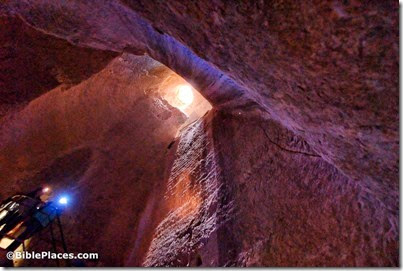Archaeologists have been sifting debris discarded from illegal excavations on the Temple Mount for more than a decade now. Yesterday they announced the discovery of a seal dating to the 10th century BC. From a press release from the Temple Mount Sifting Project:
“The seal is the first of its kind to be found in Jerusalem,” stated Dr. Gabriel Barkay, the co-founder and director of the Temple Mount Sifting Project. “The dating of the seal corresponds to the historical period of the Jebusites and the conquest of Jerusalem by King David, as well as the construction of the Temple and the royal official compound by his son, King Solomon… What makes this discovery particularly significant is that it originated from upon the Temple Mount itself.”
The seal was discovered by Matvei Tcepliaev, a ten year old boy, visiting the Temple Mount Sifting Project from Russia, and was only recently deciphered by archeologists. Since the project’s inception in 2004, more than 170,000 volunteers from Israel and around the world have taken part in the sifting, representing an unprecedented phenomenon in the realm of archaeological research.
[…]
“The discovery of the seal testifies to the administrative activity which took place upon the Temple Mount during those times,” said Barkay. “All the parallel seals with similar stylistic designs have been found at sites in Israel, among them Tel Beit Shemesh, Tel Gezer, and Tel Rehov, and were dated to the 11th – 10th centuries BCE,” asserted Barkay.
“Upon the base of the seal appear the images of two animals, one on top of the other, perhaps representing a predator and its prey. Additionally, the seal is perforated, thus enabling one to hang it from a string,” said Barkay.
Aside from the seal, which was likely used to seal documents, hundreds of pottery sherds dating to the 10th century BCE have been discovered within the soil removed from the Temple Mount. Additionally, a rare arrowhead made of bronze and ascribed to the same period by its features, has been discovered.
The press release includes photos of the seal and other finds from the same period. The organization recently released a video which documents the success of the project in a bid to raise additional funds.
HT: Joseph Lauer





